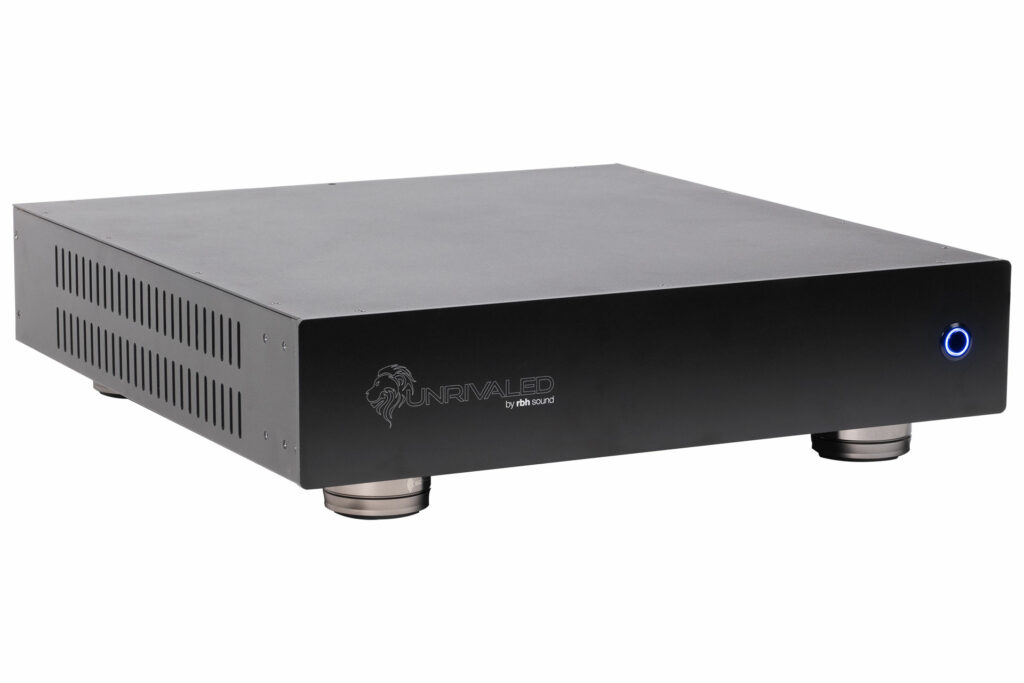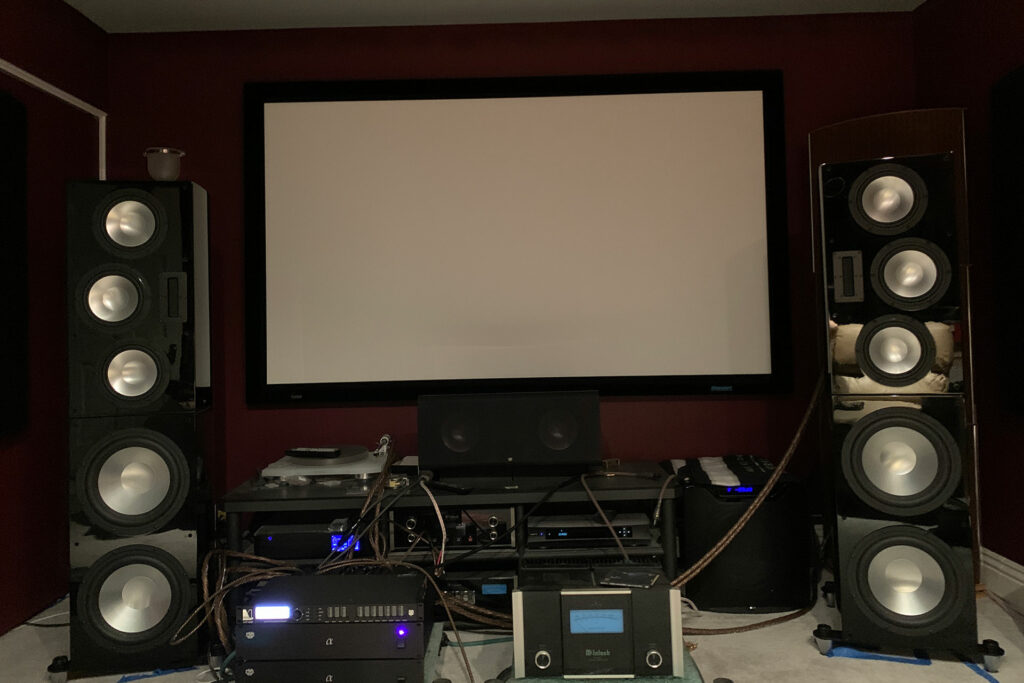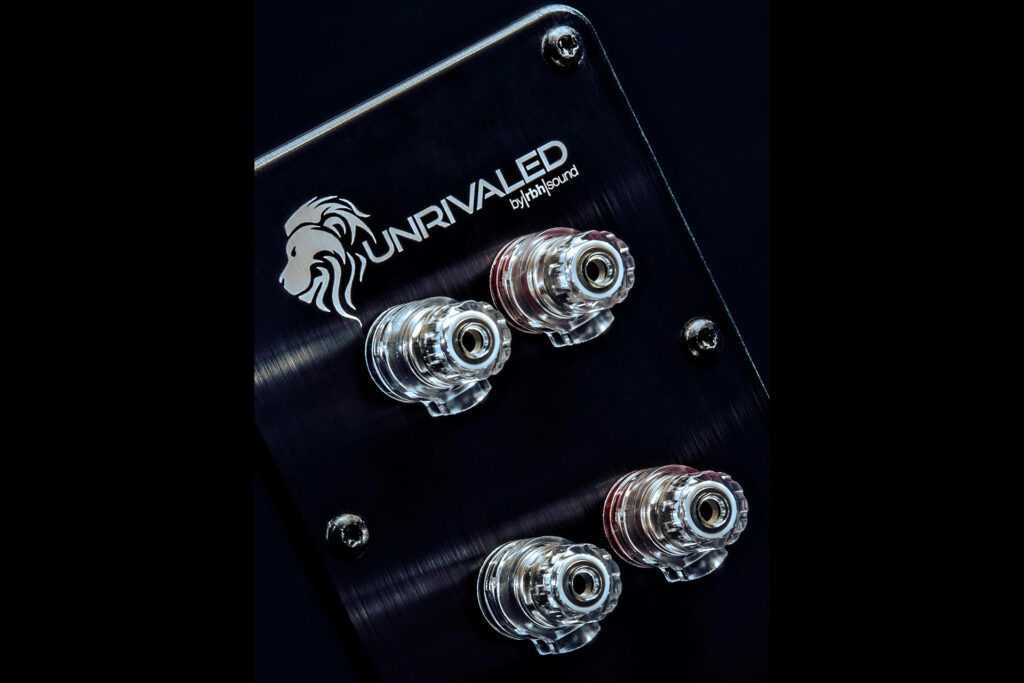RBH Sound from Layton, Utah, has been making audiophile speakers for close to 50 years but doesn’t always get the attention they deserve in the audiophile press. Perhaps this is because they started off as an original equipment manufacturer (known in the industry as an OEM) for other well-known companies, in much the same way that Focal made tweeters for Wilson Audio before becoming a player in the finished speaker business years ago. I have reviewed a few different RBH Sound speakers over the past 20 years. During each of those reviews, I had several conversations with the people from RBH, including their VP of Engineering and Technical Director, Shane Rich. Every conversation about speakers was filled with enthusiasm for some implementation of technology or a design choice and why they felt it would improve performance. While there was genuine pride and enthusiasm for their products, it was always reserved, as that is their style when others in the loudspeaker category can get a little braggadocious. There was never a negative comment about any other manufacturer’s products either as a standalone comment or in comparison to their own products. Despite their humble nature, RBH Sound has a well-deserved reputation among audio enthusiasts for making high quality speakers. RBH offers the SVTR system in two configurations: active or passive. We review the active configuration here.

What Makes the RBH SVTR Active Loudspeakers Special?
- Their active design means they’re simultaneously powered and DSP-driven, which is not a traditional configuration for large-scale audiophile speakers. The RBH SVTRs come with six channels of RBH Unrivaled Alpha (their high-end electronics brand) audiophile amplification per pair of speakers with 1,500 watts per channel for the SVTR’s internal woofers, 500 watts per channel for the midrange drivers, and 250 watt per channel for the tweeters. Upstream of the amplifier is an outboard processor that provides DSP including equalization, delay, and crossovers.
- The RBH SVTR active loudspeaker is a physically massive tower comprise of a pair of RBH’s 1212NR subwoofers internally installed at the bottom of the SVTRs, plus what would be an RBH SV-831R module integrated on the top of a large format speaker system. The system measures 62 inches tall, 15-3/16 inches wide, and 22-3/16 inches deep. From the front they appear rectangular, with separate grilles for the top and bottom cabinets. A small silver RBH badge is at the center bottom. The sides are also gently curved, making the rear of the speaker slightly narrower than the front. RBH offers different footer options, including beefy outrigger style feet that add extra stability and make adjustments simple. Each side weighs in at a whopping 205 pounds, empty. There is also a chamber in the upper cabinet that can hold sand, shot, or other similar material so you can get crazy with deadening the cabinets if you are so inclined.
- The bottom cabinet of each channel is RBH’s SV-1212NR subwoofer which is the reference version of their passive, dual 12-inch driver system with a large, downward firing port tuned to 22Hz. The drivers are aluminum cones with a damping material applied to the backside to attenuate any breakup modes or ringing. Cast alloy baskets are designed to reduce resonance and increase efficiency while providing stability for drivers that have twice the excursion of the non-reference version.
- RBH specifies the frequency response as 20Hz-35kHz ± 3dB with 93 dB sensitivity (2.83V at one meter). The impedance of the passive speaker is stated as 4 Ohms nominal, but given that the active version has its own optimized amplification built in, you need not worry about the load.
- The upper cabinets each contain three eight-inch drivers in a curved array around a large Aurum Cantus Air Motion Tweeter co-designed with RBH. Keeping with RBH’s propensity for aluminum drivers, the tweeter utilizes an aluminum conductor.
- The internal electronics consist of a Marani processor and an RBH Unrivaled Alpha amplifier, as mentioned above. The Marani handles the crossover duties, levels, delays, and equalization for lows, mids and highs for both channels. If you decide to use this in a surround system, the Marani has two more channels that can handle your center channel.
- RBH has released an updated version of their amplifier with a new chassis that features a thick brushed aluminum front panel that features a round power switch with a soft blue backlight. Functionality was upgraded with a remote trigger, which sounds like a small feature but it is very nice in a somewhat automated system. Sonically, the amplifier remains unchanged, with Pascal Class-D amplification (also used by AMPED America in their $5,000 AMPED 2400 amp; it’s the same basic chipset as found in the $30,000 Jeff Rowland Design Group’s Class-D Pascal-based amp).

Why Should You Care About the SVTR Active Loudspeakers?
The RBH SVTR Active system provides lots of flexibility combined with tremendous, if not outrageous, dynamic range. The active front-end of the system provides lots of power and flexibility. The DSP capabilities combined with the system’s incredible dynamic range provides a lot of room for the DSP to operate, which can help significantly compensate for imperfect room setup. This speaker is as much a flagship audiophile tower as much as it is a custom installer’s speaker-dream-come-true, as it serves both masters and serves them well. Despite its hefty price tag, you can sell your old amps to help you pay for the speakers because they, of course, come with their own power amps. Or you could save a cool $20,000 to have the passive version of the speakers and bring your own amps to the party. Your choice.
Some Things You Might Not Like About the RBH SVTR Speakers
- These speakers are really physically big and limited in terms of finish selections: Black (gloss) although there was a rosewood option in the past. The understandably large speaker grilles only come in black. With loudspeakers this big in your house, some additional options would give audiophiles, designers, and spouses more flexibility. Another aesthetic change I would like to see would be to have the grilles attached magnetically rather than with pins so that the front baffle is cleaner when listening without the grilles. I know that this is not a dealbreaker but on a beautifully finished premium speaker such as this, it is the small touches.
- The Marani processor is not super user-friendly for the average user. If you are one of the tech savvy audiophiles that likes to experiment with creating your own filters, this is the piece for you. The Marani is a powerful tool but a daunting one. Other changes I would like to see would be a dimmable panel and front-mounted power switch.
Listening to the RBH SVTR Active Loudspeakers…
I tried these speakers in two different rooms: my reference listening room, in which my PS Audio DirectStream (not the updated version reviewed by Paul Wilson recently) fed a McIntosh C-500 preamplifier into the Marani DSP; and in my larger living room, which opens into adjacent rooms. The downstairs system features a Marantz SACD 30n as a digital front end.
One track that I have been listening to lately on a wide variety of systems is Freya Riding’s “Lost Without You,” which features well-recorded female vocals and piano. The soundstage was solid and scaled appropriately on the RBH SVTR Actives. Riding’s voice was positioned in between and slightly behind the speakers. The piano was powerful, full-bodied, and detailed. There was power and weight but no bloat in the lower frequencies. The reproduction of the higher notes was interesting, in that the AMT tweeter remained composed at much higher volumes than many other speakers I’ve auditioned here at home, and was similar in balance to the Magico and Revel F328Be, but it did not have the last bit of upper-frequency detail. I could have asked to adjust the EQ to make the treble a bit more forward, but liked the balance Shane and I achieved. With that minor caveat, the RBH SVTRs did a great job reproducing dynamics with ease.
Tchaikovsky’s 1812 Overture (Telarc) auditioned here streaming on Tidal is not only a great piece of orchestral music, but it can also be used to evaluate several aspects of a system’s capabilities beyond the obvious dynamics of the signature canon blasts. The RBH SVTR reproduced the music with a large soundstage going past the outer edges of the speakers and deep past the front wall of the room. The orchestra was in a well-defined sense of space, with individual sections, and, at times, individual instruments easily discernible. In comparison to the Focal Kanta No. 3 and Revel F328Be, the upper strings and cymbals were a touch more reserved. The SVTR really impressed me with this track, in that it was able to reproduce the small details at any volume range from a whisper to what was probably louder than prudent (OK, definitely louder than prudent) without any compression of dynamics or change of tonal character.

Do the RBH SVTR Loudspeakers Have Any Resale Value?
I am pretty confident that they will do well on the resale market if a pair ever makes it there. Speakers and amplifiers evolve more slowly than most other audio/video components. The DSP processor/controller makes these speakers more adaptable than most when it comes to different rooms. The ability to precisely control delays and equalization provides a significant leg up in getting these speakers to excel in a variety of different rooms.
Who Is the Competition for the RBH SVTR Active Loudspeakers?
The Legacy Audio AERIS ($21,975) comes to mind as it also uses an AMT for the highs, and lows are handled by a pair of 12-inch woofers. Legacy’s optional Wavelet appears to have similar processing to the Marani but with some additional user-friendly features. I have not been fortunate to spend time with them but my experience with other Legacy Audio speakers has been positive.
ATC is very well respected in both professional and consumer audio worlds and they make a wide variety of active speakers, but they do not have the advanced signal processing of the RBH SVTR; you would have to bring in your own processor such as one of the excellent Trinnov Amethyst preamps or audiophile equalizers. Other active speakers with advanced DSP capabilities include the smaller ATC Kii Audio Three ($15,775) all the way to the large and futuristic Band & Olufsen BeoLab90 ($90,000). There are any number of Meridian active speakers that are futuristic looking, capable of custom finishes, and pack a lot of DSP power including a DAC – all in one pair of speakers – but are far from affordable.

Final Thoughts on the RBH SVTR Active Loudspeakers
The RBH SVTR is a truly impressive audiophile speaker system. I’ve had these speakers installed in two very different rooms with excellent results in both. One room is a treated, 12- by 17-foot media room and the other is a more untreated, asymmetrical open-floorplan living room. Despite the rooms being as different as they could be acoustically, the RBH’s DSP system allowed the SVTRs to be dialed in to provide holographic imaging and a well-balanced presentation in each. The impressive scale and effortless dynamics along with some of the deepest and prodigious yet detailed bass did not hurt either. I think the highs on the Revel F328Be were a bit more nuanced and I considered using the Marani to ever so slightly adjust the EQ and bring this more forward and might give it a try someday, but it wasn’t urgent by any means. On the other hand, the smaller speaker simply does not have the output capabilities or range that the RBH SVTR is capable of with complete control.
While pondering this, I realized another great strength of a system that incorporates an advanced DSP such as this, you do not need to settle for one sound profile. It is simple enough to create multiple EQ profiles and switch as needed. If you prefer different house curves for different types of music, easy enough. Same if you have different listeners with different preferences. Of course, this would not be possible without a speaker system that can both resolve minute details and handle a large dynamic range; thankfully the RBH SVTR does this and makes it sound effortless.
.




I heard these recently at the RBH factory and they were really really good. HUGE but visceral in their impact.